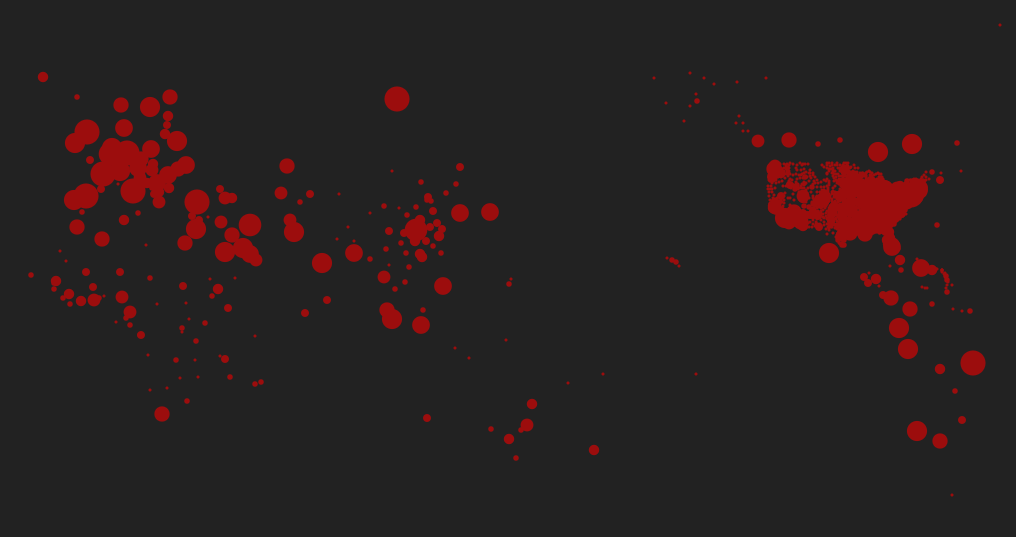The Ministry of Health closed two COVID-19 clusters at the weekend, meaning there have been no transmissions from them in 28 days.
Thirteen of the sixteen clusters are still considered active, although many have not seen a new case in a significant period of time.
The SMC asked experts to comment on how this changes the public health response.
Professor Murray Cox, Te Pūnaha Matatini and Massey University, comments:
“Clusters of cases sound a bit scary, especially when they’re reported on daily and we’re hearing about them growing. From a scientific perspective, it’s actually the opposite situation though: clusters are a good thing.
“The reason is that if a case has been traced back to a cluster, then we know where it came from. And that in turn means healthcare professionals can put support around that person to limit further spread.
“The thing that scientists find scary is when you don’t know where a case came from. Does that mean there’s someone – or worse, a few someones – out in the community who you don’t know about, but might be transmitting the virus?
“Thankfully the news in New Zealand has been resoundingly positive. Almost all of the cases in recent weeks have been linked to existing clusters, which means spread to new people can be effectively managed and stopped. Even better, many clusters are now being officially closed, which means the last person in the chain of infection has recovered, so there’s no chance of further transmission from that cluster.
“There are still a number of live cases being tracked and we still need to be really careful, but we’re nearing a point where we might actually have no virus cases within New Zealand. The big challenge coming up, solely in terms of the virus itself, is how we keep it that way.”
No conflict of interest.
Associate Professor Daniel Exeter, School of Population Health, University of Auckland, comments:
“Now that the number of new cases is only trickling in (with none yesterday), it makes sense that the Ministry of Health will be starting to close the clusters, especially those that have not had any new cases for 28 days or more.
“Many of the cases we have seen in New Zealand have been linked with overseas travel and with the existing clusters. If the number of new cases each day stays relatively small, contact tracing is manageable.
“However, as our bubble has expanded from the local to the regional, our potential to interact with others in the community has also increased. At this stage, the demand for contact tracing is manageable as we have a handful of new cases to trace each day.
“But as many of us enjoy our newfound freedom in commuting within the region – as seen by the huge queues at local beaches and more people in parks, coupled with a more relaxed attitude to physical distancing – demand for contact tracing may in fact increase in the next 2-3 weeks. It’s also really important that the Government maintains the current testing levels, especially as freedoms increase as the Alert Levels reduce.”
No conflict of interest.
Associate Professor Arindam Basu, College of Education, Health & Human Development, University of Canterbury:
“In the COVID-19 pandemic, clusters are defined as networks of 10 or more people who have a common source of infection with SARS-CoV-2. Clusters are opened when that size is reached and likewise closed when they do not report new cases after 28 days, or two 14 day cycles of the virus propagation, signifying that in those “conglomerations” of people no new transmission have occurred. Hence, people who were in that cluster are now unlikely to spread or start new clusters. If no new clusters are identified, and clusters continue to be closed, the number of infections would be deemed to significantly reduce.
“Outside of clusters, the process of tracking a virus would be dependent on two things. One, people reporting suggestive symptoms and their contact with suspected cases and getting tested. And two, random testing of individuals who do not report symptoms but who are likely to have come into contact with potentially infected individuals (such as near supermarkets and other places where people are likely to be exposed to people who harbour infections).
“This process is business as usual in public health, so closure of clusters is not likely to impact such operations. A closure indicates the epidemiologists have sufficient information and confidence that no new infections will come from the cluster, but it does not indicate that surveillance will be scaled down, particularly in presence of active epidemic.
“The few cases that are not linked to an existing cluster indicate that their source was outside of that cluster. For example, this can be an imported case, or linked to another remote case possibly part of an unidentified cluster. People infected with COVID-19 are capable of infecting others for up to 48 hours before displaying symptoms. Therefore, extensive contact tracing is still necessary for all individuals that are not part of existent clusters, the goal being to unravel the network structure. That way, individuals who are potentially infected or infectious can be isolated (home/institutional quarantine) for 15 days to prevent occurrence of new cases from such individuals.”
No conflict of interest.
